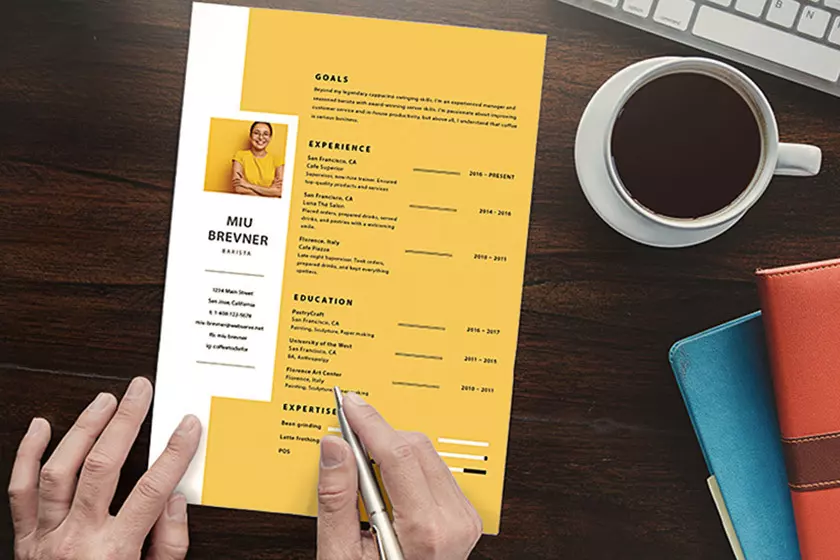If you’re looking for a job and want to work for a reputable company, the first and most crucial step is to introduce yourself to the potential employer. This is typically done through a resume, which acts as a formal document summarizing your qualifications for the specific job position you’re applying for. A well-crafted resume can make all the difference in whether you catch the attention of the hiring manager or get overlooked. It serves as your first impression, offering the employer a glimpse into your personality, education, and work experience. Therefore, it’s essential to ensure that your resume is not just a list of your experiences but a persuasive document that highlights your strengths and suitability for the role.
While there are established formats for writing a resume, the actual content and style are highly personalized. The more visually appealing, clear, and detailed your resume is, the better chance you have of standing out from other candidates. An organized resume that effectively presents your skills, experiences, and accomplishments can significantly influence the employer’s perception of you as a candidate. But what exactly is a resume, and how can you ensure yours is professional and impactful?
In simple terms, a resume is a marketing document that sells your professional self to the employer. It should highlight your most relevant skills, qualifications, and experiences in a way that persuades the employer to invite you for an interview. Crafting a resume that is well-organized, concise, and tailored to the job you’re applying for can dramatically improve your chances of landing an interview.
In this article, we will walk you through the key elements of creating a professional resume that makes an impact. From formatting guidelines to tips on how to present your achievements in the best possible light, we aim to help you craft a resume that reflects your strengths and enhances your candidacy. So, before you begin drafting your resume, we highly recommend reading this guide thoroughly. Taking the time to understand the process will help you avoid common pitfalls and ensure that your resume is as strong and effective as it can be.
What is a Resume?
There are various definitions of what a resume is. For instance, many describe it as follows:
A resume is a document that contains an individual’s educational background, work history, and achievements, usually presented when applying for a job. A well-crafted resume conveys your information and experiences to the employer as effectively as possible.
In essence, a resume is a marketing tool through which you need to sell yourself. In this document, you must highlight your skills, qualifications, and experiences to the employer. The better you present yourself, the easier it will be for the employer to make a decision.
A professional resume should be designed to emphasize relevant job information and personal strengths while covering any weaknesses.
It’s important to note that there is no absolute method for writing a resume. A resume is your personal document, and you have the liberty to design it however you wish. Your resume can be on paper, in PDF format, on your personal website, or even printed on a T-shirt (if your employer values creativity).
However, a professional resume must contain certain essential elements. The employer expects to gather useful information from your resume. In the following sections, we’ll discuss what a professional resume should include.
How Long Should a Resume Be?
A standard resume is typically no longer than two A4 pages. It contains essential information about your work history without going into too much detail.
Resumes are usually one or two pages long and present your educational and work experiences concisely. A candidate should tailor their resume to each job position. There is no need to list everything in chronological order, nor does it have to include all your past work experiences.
Resume vs. CV
On the other hand, a CV (Curriculum Vitae) is a document that spans two or more pages and provides a detailed account of your personal information, job history, and achievements. A CV should also include academic records and personal accomplishments such as published papers, honors, and awards.
A CV is generally written in chronological order, giving the employer a clearer picture of your career path. Unlike resumes, CVs are often static and don’t change for different job applications.
If your resume is too lengthy, you can reduce the number of pages significantly by choosing an appropriate font, using tables, and formatting effectively.
Types of Resumes
Resumes are generally written in four formats:
- Chronological: This resume lists your work history in order, with the most recent job appearing first. It is the most common and straightforward way to write a resume. Chronological resumes are detailed, easy to follow, and particularly useful for students who have solid work experience.
- Functional: This type of resume focuses on specific skills and experiences relevant to the job at hand. It is often used for managerial positions.
- Combination: As the name suggests, this format combines both chronological and functional elements, highlighting both work history and skills.
- Targeted: A targeted resume is tailored specifically for the job you’re applying for. It emphasizes the work history, skills, and education that are most relevant to the job description.
What Should a Professional Resume Include?
One common question, especially from recent graduates, is: what information should be included in a resume? Here’s what you should include:
- A Suitable Template: Use a well-organized format to present your skills, strengths, and experiences clearly.
- Contact Information: Include your contact details in the header of your resume.
- Summary/About Me and Career Objective: Provide a brief introduction about yourself and your career goals.
- Work Experience: List relevant job experiences.
- Education: Include your academic background.
- Skills: Highlight relevant skills.
- Additional Sections: Include certifications, non-academic qualifications, other preferences, projects, etc.
Ensure that your resume is well-designed, with adequate white space, a visually appealing layout, and a readable font. If you have extensive work experience, aim for a two-page resume; otherwise, a one-page resume is more professional.
Personal Information in a Resume
Personal details usually include your full name, address, birthdate, and contact numbers (landline and mobile).
While adding a photo to your resume was traditionally discouraged due to potential bias based on age, gender, or ethnicity, it is now optional, especially with the rise of platforms like LinkedIn. If you do include a photo, ensure it’s a professional headshot, and you smile.
Skills and Languages
Listing your skills is optional but can be valuable, especially if you’re applying for an international job. Similarly, mentioning proficiency in different languages can be an asset.
References
Employers often don’t check references at the resume stage. If you’re short on space, you can omit this section and provide references upon request.
Common Resume Mistakes
According to a survey, the most common mistakes job seekers make include:
- Spelling and grammar errors (56%)
- Irrelevant skills (21%)
- Short resumes with little work experience (16%)
- Poor structure (11%)
- Lack of achievements (9%)
- Incorrect contact information (9%)
- Vague information (5%)
- Lying (2%)
- Including a photo (1%)
Finally, always save your resume as a PDF to preserve its formatting across different devices.
Final Thoughts on Writing a Resume
Writing a professional resume is time-consuming and challenging, but it’s the first step toward landing your dream job. A well-crafted resume should capture the employer’s attention quickly and encourage them to contact you for an interview.




